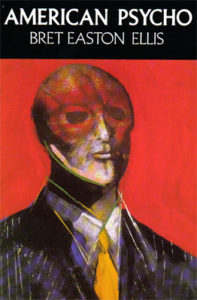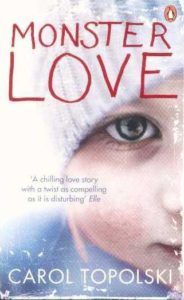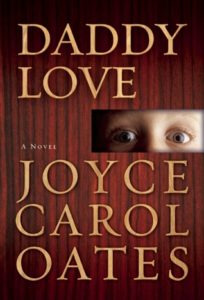
The Pros and Cons of Getting Inside a Villain's Mind
How to Raise the Stakes Without Ruining the Mystery
Introducing a villain’s point of view in a novel—whether it be one of several perspectives or solely the antagonists’ viewpoint—has as many great benefits as it does potential pitfalls. So caution is advised when entering the mind of a villain in order to tell a story, because you never know what might go wrong. Below are some lessons I’ve learned from my own writing: the good, the bad, and the ugly about a villain’s eye view.
Benefit: Villains are Cool
Villains are interesting. Fascinating. They are different to most of us in the way they see the world and the way they interact with it. They have a different set of tools to deal with their problems. Bullying boss at work? A typical reaction may be to seek to minimize the time spent with them, or speak to HR, or, in extreme cases, to change jobs.
Not so for a villain. They may quickly reach for a more radical solution: frame their boss by putting some indecent images on their work computer, or sabotage their upcoming presentation by spiking their coffee with vodka, or even arrange a nasty accident on the fire escape stairs.
We like to get a glimpse into the mind of the villain, to see what they are thinking and how they approach the world. We are drawn to their point of view as it is so opposed to ours. And when we see it, we may wonder whether that colleague we don’t really know all that well is harboring sinister plans…
Pitfall: A Villain Might be Too Cool
Think Satan in Paradise Lost: Smart, sinuous, seductive. Sexy, even. Yes, he is the personification of evil, but he is so much more interesting than any of the other characters.
This creates a problem. We need to sympathize with the main character. We need to want them to win. If we like the villain too much, the novel will lose its narrative power, which, in many cases rests on the triumph of good over evil. We need to want Harry to defeat Voldemort, or his final victory will feel hollow.
So, if the villain’s perspective is to be included, we must make sure that it does not seduce us into siding with the bad guys.
Benefit: Villains are Cruel
This is a variant on the first point. There is a vicarious pleasure in witnessing an evil mind at work. Hearing firsthand about a villain’s plans, or watching as they go calmly about their murderous business fascinates readers. Look at Dexter: a psychopath trained to kill only bad guys in order to satiate his incurable blood lust. We like to see him in action, and we enjoy watching as he stalks and dispatches the various murderers and rapists that he chooses as his victims.
Pitfall: Too Cruel is a Turn-off
Being inside a villain’s head can be too much. Chester Cash in Joyce Carol Oates’s Daddy Love is a serial kidnapper who metes out horrible abuse to his young victims. He is abhorrent, repulsive, and unredeemed by any human quality. We may like to peek inside a twisted mind, but too much time spent there—or too thorough a view of the depth of the villain’s depravity—can be off-putting.
Benefit: Suspense
Occasional glimpses into a villain’s world can build a novel’s suspense: we see what they are up to and understand the gravity of the situation in a way that the other characters may not. It is a great way to increase the sense of threat: being inside a villain’s mind shows the reader how evil they truly are, which makes the threat real.
Pitfall: Destroys the Mystery
The flip-side of this is that the mystery can also collapse. If a villain reveals too much, then there is no longer a mystery to solve. This is particularly true if by seeing the villain’s point of view we learn their true identity. If the reader knows both who they are and what they’re up to, then all that’s left is the question of whether the main character will manage to stop or defeat them.
* * * *
As a rule of thumb, a villain’s point of view should only be used to build suspense, create a sense of danger, or deepen the mystery. It should not be invoked to advance the plot or to reveal key information—the main character should be the one who solves the mystery and moves things along. If this is not the case, then a writer risks diminishing the role of the main character—and our sympathy for them. The glimpse into a villain’s mind can therefore not reveal too much. We need to still be wondering who they are, or, if their identity must be revealed, what their motive is.
This raises a technical challenge: if the identity of a villain is to be hidden, a writer cannot use any language that gives away clues: any gender-specific words rule out half of the potential suspects. When writing from the villain’s point of view in After Anna, when writing from villain’s point of view I used the second person: “You were not seen, you are sure of that.” This hid their gender, and had the additional benefit of making them seem more than a little creepy.
So, if you plan to use the villain’s voice in your writing, do it, but ask yourself the following questions:
–Does it add suspense or mystery?
–Does it make the villain appear more sinister?
–Does it add to the sense of danger?
–Does it reveal key information or help solve the core mystery?
–Is the villain taking over from the main character, either in terms of capturing our sympathy or talking up “screen time”?
–Is the villain so unpleasant as to put readers off the story?
The answer to the first three questions should be yes; the last three, no. If this is not the case, then you might be using too much of the villain’s point of view, or using it in a way that throws the narrative out of balance.
Of course, as with all writing advice, there are many examples of great books which break all these rules, so take these as no more than suggestions—and good luck!
* * * *
Five Notable Books Featuring a Villain’s Perspective
- A classic villain, who kills for no reason other than his search for excess and pleasure. Satire, yes, but no less unsettling for that.
- Two deranged parents have an unwanted baby, with tragic consequences. They are chilling, emotionless, utterly cruel: this book stayed with me for a long time.
- A classic for many reasons, not the least of which is the character of Raskolnikov, whose thoughts on nihilism, the law, suffering and his own violent crime are at the heart of the novel.
- We see this story unfold from many points of view; it is Daddy Love’s that shocks, disturbs and sickens, as he tortures his young victim.
- This is a truly disturbing book. We see, via his correspondence with a female student, into the mind of an aging sex offender in his 23rd year of imprisonment. It is a deeply unpleasant place.
Alex Lake
Alex Lake is the pseudonymous author of After Anna, a psychological thriller on sale now from HarperCollins.
























